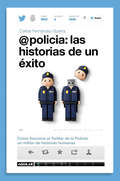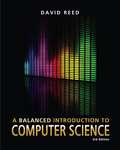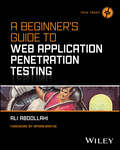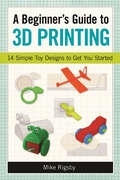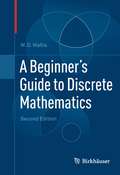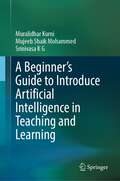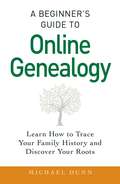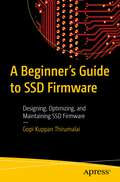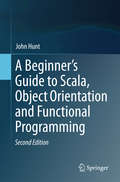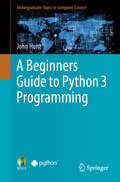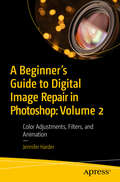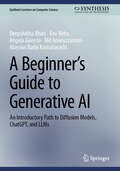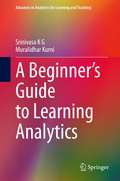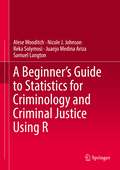- Table View
- List View
@policía: las historias de un éxito
by Carlos Fernández GuerraDescubre el perfil de la Policía Nacional en Twitter, la cuenta oficial de seguridad más seguida del mundo. Gracias a su originalidad y sentido del humor, el Twitter de la Policía española ya cuenta con más de 1.000.000 de seguidores. Un millón de historias en una sola, una demostración del nuevo papel que tienen las instituciones y los ciudadanos en el siglo XXI. Con @policia, descubre una Policía comunicadora, revolucionaria y muy eficaz que busca que el ciudadano la conozca y participe de sus éxitos. Entérate de los retos, las campañas, las mejores anécdotas y los logros que se han llevado a cabo gracias a la ciudadanía usando la cuenta de @policia. Conoce a los héroes y villanos de Internet y las conmovedoras historias de cómo la sociedad actúa en situaciones límite ante la llamada de auxilio de @policia. Mira qué hay tras las bambalinas: un equipo de personas con sus fakes, sus historias, sus aspiraciones y muchas ganas de tuitear.Por su lenguaje cercano, orientado a impactar y simpatizar con el ciudadano, así como su visión crítica y humorística de la actualidad, es ya el modelo a seguir para otras muchas instituciones y entidades privadas de todos los ámbitos, que han optado también por este tono informal de comunicación en las redes. Se partícipe de los grandes aciertos y también de los polémicos errores o fakes de esta cuenta. Desde la exitosa petición de donantes de sangre para el accidente de tren de Santiago de 2013 hasta la puesta en marcha de nuevas formas de colaboración ciudadana como la #Tweetredada, con la que se ha conseguido atrapar a cientos de traficantes de droga en nuestro país. Todo esto aderezado con las pequeñas «cagadas», los momentos de tensión y los tuits más torpes de @policia. En este libro no solo encontrarás el relato del éxito de @policia, sino todas las historias humanas que lo han hecho posible. Un millón de historias en una sola, una demostración del nuevo papel que tienen las instituciones y los ciudadanos en el siglo XXI.
A Balanced Introduction to Computer Science
by David ReedA Balanced Introduction to Computer Science, 3/e is ideal for Introduction to Computing and the Web courses in departments of Math and Computer Science. <p><p> This thoughtfully written text uses the Internet as a central theme, studying its history, technology, and current use. Experimental problems use Web-based tools, enabling students to learn programming fundamentals by developing their own interactive Web pages with HTML and JavaScript. Integrating breadth-based and depth-based chapters, Reed covers a broad range of topics balanced with programming depth in a hands-on, tutorial style.
A Beginner's Guide To Web Application Penetration Testing (Tech Today)
by Ali AbdollahiA hands-on, beginner-friendly intro to web application pentesting In A Beginner's Guide to Web Application Penetration Testing, seasoned cybersecurity veteran Ali Abdollahi delivers a startlingly insightful and up-to-date exploration of web app pentesting. In the book, Ali takes a dual approach—emphasizing both theory and practical skills—equipping you to jumpstart a new career in web application security. You'll learn about common vulnerabilities and how to perform a variety of effective attacks on web applications. Consistent with the approach publicized by the Open Web Application Security Project (OWASP), the book explains how to find, exploit and combat the ten most common security vulnerability categories, including broken access controls, cryptographic failures, code injection, security misconfigurations, and more. A Beginner's Guide to Web Application Penetration Testing walks you through the five main stages of a comprehensive penetration test: scoping and reconnaissance, scanning, gaining and maintaining access, analysis, and reporting. You'll also discover how to use several popular security tools and techniques—like as well as: Demonstrations of the performance of various penetration testing techniques, including subdomain enumeration with Sublist3r and Subfinder, and port scanning with Nmap Strategies for analyzing and improving the security of web applications against common attacks, including Explanations of the increasing importance of web application security, and how to use techniques like input validation, disabling external entities to maintain security Perfect for software engineers new to cybersecurity, security analysts, web developers, and other IT professionals, A Beginner's Guide to Web Application Penetration Testing will also earn a prominent place in the libraries of cybersecurity students and anyone else with an interest in web application security.
A Beginner's Guide to 3D Modeling: A Guide to Autodesk Fusion 360
by Cameron CowardA Beginner&’s Guide to 3D Modeling is a project-based, straightforward introduction to computer-aided design (CAD). You&’ll learn how to use Autodesk Fusion 360, the world&’s most powerful free CAD software, to model gadgets, 3D print your designs, and create realistic images just like an engineering professional—with no experience required! Hands-on modeling projects and step-by-step instructions throughout the book introduce fundamental 3D modeling concepts. As you work through the projects, you&’ll master the basics of parametric modeling and learn how to create your own models, from simple shapes to multipart assemblies. Once you&’ve mastered the basics, you&’ll learn more advanced modeling concepts like sweeps, lofts, surfaces, and rendering, before pulling it all together to create a robotic arm. You&’ll learn how to:• Design a moving robotic arm, a door hinge, a teapot, and a 20-sided die• Create professional technical drawings for manufacturing and patent applications • Model springs and other complex curves to create realistic designs • Use basic Fusion 360 tools like Extrude, Revolve, and Hole• Master advanced tools like Coil and ThreadWhether you&’re a maker, hobbyist, or artist, A Beginner&’s Guide to 3D Modeling is certain to show you how to turn your ideas into professional models. Go ahead—dust off that 3D printer and feed it your amazing designs.
A Beginner's Guide to 3D Printing: 14 Simple Toy Designs to Get You Started
by Mike RigsbyA Beginner's Guide to 3D Printing is the perfect resource for those who would like to experiment with 3D design and manufacturing, but have little or no technical experience with the standard software. Author Mike Rigsby leads readers step-by-step through 15 simple toy projects, each illustrated with screen caps of Autodesk 123D Design, the most common free 3D software available. The projects are later described using Sketchup, another free popular software package. Beginning with basics projects that will take longer to print than design, readers are then given instruction on more advanced toys, including a baking-powder submarine, a train with expandable track, a multipiece airplane, a rubber band-powered car, and a noise-making push toy with froggy eyes. Once trained in the basics of computer-aided design, readers will be able to embark on even more elaborate projects of their own creation.
A Beginner's Guide to Discrete Mathematics
by W. D. WallisWallis's book on discrete mathematics is a resource for an introductory course in a subject fundamental to both mathematics and computer science, a course that is expected not only to cover certain specific topics but also to introduce students to important modes of thought specific to each discipline . . . Lower-division undergraduates through graduate students. --Choice reviews (Review of the First Edition) Very appropriately entitled as a 'beginner's guide', this textbook presents itself as the first exposure to discrete mathematics and rigorous proof for the mathematics or computer science student. --Zentralblatt Math (Review of the First Edition) This second edition of A Beginner's Guide to Discrete Mathematics presents a detailed guide to discrete mathematics and its relationship to other mathematical subjects including set theory, probability, cryptography, graph theory, and number theory. This textbook has a distinctly applied orientation and explores a variety of applications. Key Features of the second edition: * Includes a new chapter on the theory of voting as well as numerous new examples and exercises throughout the book * Introduces functions, vectors, matrices, number systems, scientific notations, and the representation of numbers in computers * Provides examples which then lead into easy practice problems throughout the text and full exercise at the end of each chapter * Full solutions for practice problems are provided at the end of the book This text is intended for undergraduates in mathematics and computer science, however, featured special topics and applications may also interest graduate students.
A Beginner's Guide to Introduce Artificial Intelligence in Teaching and Learning
by Srinivasa K G Muralidhar Kurni Mujeeb Shaik MohammedThis book reimagines education in today’s Artificial Intelligence (AI) world and the Fourth Industrial Revolution. Artificial intelligence will drastically affect every industry and sector, and education is no exception. This book aims at how AI may impact the teaching and learning process in education. This book is designed to demystify AI for teachers and learners. This book will help improve education and support institutions in the phenomena of the emergence of AI in teaching and learning. This book presents a comprehensive study of how AI improves teaching and learning, from AI-based learning platforms to AI-assisted proctored examinations. This book provides educators, learners, and administrators on how AI makes sense in their everyday practice. Describing the application of AI in ten key aspects, this comprehensive volume prepares educational leaders, designers, researchers, and policymakers to effectively rethink the teaching and learning process and environments that students need to thrive. The readers of this book never fall behind the fast pace and promising innovations of today’s most advanced learning technology.
A Beginner's Guide to Online Genealogy: Learn How to Trace Your Family History and Discover Your Roots
by Michael DunnUse online tools to discover your family's history!Today, with millions of records available online, it's never been easier to chart your family history and discover your roots. But with hundreds of ancestors just a click away, where do you start? This book guides you through the genealogy process with easy-to-understand strategies for researching family roots online. Featuring detailed explanations, each chapter teaches you how to navigate popular genealogy websites, decipher census data and other online records, and connect with other family members to share your findings.Complete with tips on using free databases and genealogy apps, A Beginner's Guide to Online Genealogy has everything you need to find long-lost relatives and map your family tree!
A Beginner's Guide to R: A Frequentist And Bayesian Perspective For Ecologists (Use R!)
by Elena N. Ieno Alain Zuur Erik MeestersBased on their extensive experience with teaching R and statistics to applied scientists, the authors provide a beginner's guide to R. To avoid the difficulty of teaching R and statistics at the same time, statistical methods are kept to a minimum. The text covers how to download and install R, import and manage data, elementary plotting, an introduction to functions, advanced plotting, and common beginner mistakes. This book contains everything you need to know to get started with R. "Its biggest advantage is that it aims only to teach R...It organizes R commands very efficiently, with much teaching guidance included. I would describe this book as being handy--it's the kind of book that you want to keep in your jacket pocket or backpack all the time, ready for use, like a Swiss Army knife." (Loveday Conquest, University of Washington) "Whilst several books focus on learning statistics in R..., the authors of this book fill a gap in the market by focusing on learning R whilst almost completely avoiding any statistical jargon...The fact that the authors have very extensive experience of teaching R to absolute beginners shines throughout." (Mark Mainwaring, Lancaster University) "Exactly what is needed...This is great, nice work. I love the ecological/biological examples; they will be an enormous help." (Andrew J. Tyne, University of Nebraska-Lincoln)
A Beginner's Guide to SSD Firmware: Designing, Optimizing, and Maintaining SSD Firmware
by Gopi Kuppan ThirumalaiExplore the concepts and techniques that are essential for designing, optimizing, and maintaining SSD (solid state drive) firmware. This book discusses the role of firmware in the functioning of SSDs and the importance of keeping firmware up to date to ensure optimal performance and security. The book starts with an introduction to SSD firmware and its role in SSDs. You will then learn basic NAND operations and common firmware features, followed by various design considerations and best practices for optimizing and maintaining SSD firmware. Moving ahead, you will learn some of the advanced features that are included in modern SSD firmware, such as wear leveling algorithms, garbage collection algorithms, error prevention and correction methods, and algorithms to reduce write amplification. User data flow and exception handling are discussed next, along with performance and debugging. To wrap things up, you will gain insight into possible future developments and innovations in SSD firmware. After reading this book, you will have a solid understanding of the key concepts and techniques that are crucial to designing, optimizing, and maintaining SSD firmware. What Will You Learn Understand the fundamentals of NAND flash memory, including its architecture, operation, and limitationsExplore the basics and evolution of firmware, specifically in the context of SSDsGrasp the basics of firmware, including its purpose, structure, and development processSurvey the specific features of SSD firmware, such as wear leveling, error correction, and garbage collectionUnderstand performance criteria for SSDsMaster the art of designing a fundamental SSD firmware, encompassing host interfaces and vital requirements Who Is This Book For: Engineers involved in designing and developing firmware.
A Beginner's Guide to Scala, Object Orientation and Functional Programming
by John HuntScala is now an established programming language developed by Martin Oderskey and his team at the EPFL. The name Scala is derived from Sca(lable) La(nguage). Scala is a multi-paradigm language, incorporating object oriented approaches with functional programming. Although some familiarity with standard computing concepts is assumed (such as the idea of compiling a program and executing this compiled from etc.) and with basic procedural language concepts (such as variables and allocation of values to these variables) the early chapters of the book do not assume any familiarity with object orientation nor with functional programming These chapters also step through other concepts with which the reader may not be familiar (such as list processing). From this background, the book provides a practical introduction to both object and functional approaches using Scala. These concepts are introduced through practical experience taking the reader beyond the level of the language syntax to the philosophy and practice of object oriented development and functional programming. Students and those actively involved in the software industry will find this comprehensive introduction to Scala invaluable.
A Beginner's Guide to Scala, Object Orientation and Functional Programming
by John HuntScala is a new programming language developed by Martin Odersky and his team at the EPFL. The name Scala is derived from Sca(lable) La(nguage). Scala is a multi-paradigm language, incorporating object oriented approaches with functional programming. Although some familiarity with standard computing concepts is assumed (such as the idea of compiling a program and executing this compiled form, etc.) and with basic procedural language concepts (such as variables and allocation of values to variables) the early chapters of the book do not assume any familiarity with object orientation nor functional programming. These chapters also step through other concepts with which the reader may not be familiar (such as list processing). From this background, John Hunt provides a practical introduction to object and functional technology using Scala, one of the newest and most interesting programming languages available. A variety of concepts are introduced through practical experience taking the reader beyond the level of the language syntax to the philosophy and practice of object-oriented development and functional programming. Students, and those actively involved in the software industry will find this comprehensive introduction to Scala and to object orientation and functional programming, invaluable.
A Beginners Guide to Amazon Web Services
by Rohit Raja Parul DubeyAmazon Web Services (AWS) provides on-demand cloud computing platforms and application programming interfaces (APIs) to individuals, companies, and govern- ments, along with distributed computing processing capacity and software tools via AWS server farms. This text presents a hands-on approach for beginners to get started with Amazon Web Services (AWS) in a simple way. Key Features It discusses topics such as Amazon Elastic Compute Cloud, Elastic Load Balancing, Auto Scaling Groups, and Amazon Simple Storage Service. It showcases Amazon Web Services’ identity, access management resources, and attribute-based access control. It covers serverless computing services, Virtual Private Cloud, Amazon Aurora, and Amazon Comprehend. It explains Amazon Web Services Free Tier, Amazon Web Services Marketplace, and Amazon Elastic Container Service. It includes security in Amazon Web Services, the shared responsibilitymodel, and high-performance computing on Amazon Web Services. The text is primarily written for graduate students, professionals, and academic researchers working in the fields of computer science, engineering, and information technology. Parul Dubey is currently working as an Assistant professor in the Department of Artificial Intelligence at G H Raisoni College of Engineering, Nagpur, India. She has filed for 15 Indian patents. She is responsible for about 10 publications in conference proceedings, Scopus, and journals. She has contributed book chapters in an edited book published by CRC Press and other reputed publishers. She is also an AWS Certified Cloud Practitioner. Rohit Raja is working as an associate professor and head in the Department of Information Technology at Guru Ghasidas Vishwavidyalaya, Bilaspur, India. His research interests include facial recognition, signal processing, networking, and data mining. He has pub- lished 100 research papers in various international and national journals (including publications by the IEEE, Springer, etc.) and proceedings of reputed international and national conferences (again including publications by Springer and the IEEE).
A Beginners Guide to Python 3 Programming (Undergraduate Topics in Computer Science)
by John HuntThis textbook on Python 3 explains concepts such as variables and what they represent, how data is held in memory, how a for loop works and what a string is. It also introduces key concepts such as functions, modules and packages as well as object orientation and functional programming. Each section is prefaced with an introductory chapter, before continuing with how these ideas work in Python. Topics such as generators and coroutines are often misunderstood and these are explained in detail, whilst topics such as Referential Transparency, multiple inheritance and exception handling are presented using examples. A Beginners Guide to Python 3 Programming provides all you need to know about Python, with numerous examples provided throughout including several larger worked case studies illustrating the ideas presented in the previous chapters.
A Beginners Guide to Python 3 Programming (Undergraduate Topics in Computer Science)
by John HuntThis textbook is aimed at readers who have little or no knowledge of computer programming but want to learn to program in Python. It starts from the very basics including how to install your Python environment, how to write a very simple program and run it, what a variable is, what an if statement is, how iteration works using for and while loops as well as important key concepts such as functions, classes and modules. Each subject area is prefaced with an introductory chapter, before continuing with how these ideas work in Python. The second edition has been completely updated for the latest versions of Python including Python 3.11 and Python 3.12. New chapters have been added such as those that consider where and how Python is used, the use of Frozensets, how data can be sorted, enumerated types in Python, structural pattern matching and how (and why) Python Virtual Environments are configured. A new chapter ‘The Python Bites back’ is introduced to present the fourteen most common / biggest gotchas for someone new to Python. Other sections have been updated with new features such as Exception Groups, string operations and dictionary operations. A Beginners Guide to Python 3 Programming second Edition provides all you need to know about Python, with numerous examples provided throughout including several larger worked case studies illustrating the ideas presented in the previous chapters.
A Beginner’s Guide to Digital Image Repair in Photoshop: Color Adjustments, Filters, and Animation
by Jennifer HarderContinue to explore how to digitally restore your old historical photos in Photoshop for print out or to use online as still photos. As you progress through this volume’s chapters, you’ll look at some of the many color adjustments and filters that Photoshop has to offer, both old and new. These can assist you in your restoration project or to animate select images. A Beginner’s Guide to Digital Image Repair in Photoshop: Volume 2 shares various techniques and tips that you can use to restore your own photos using Photoshop’s Adjustment Layers and filters. You’ll look at some basic animation options and the various techniques you can use in Photoshop to repair damage. When done you’ll be ready to move beyond Photoshop and explore the next steps in your project. What You’ll Learn Use the new and improved Adjustment Layers panel for basic overall color correction. Discover which old and new filters are useful for repairing most photo issues. Animate photos using the Photoshop Timeline panel. Who Is This Book For Beginning to Intermediate-level users who would like to learn how to repair old historical photos and slides for digital presentation or for print. Also, for those who are interested in basic digital image repair and animation.
A Beginner’s Guide to Digital Image Repair in Photoshop: Touching Up Your Historical Photos
by Jennifer HarderDigitally restore your old photos in Photoshop for print out or to use online as still photos. This first of two volumes will show you some of the basic techniques you can use in Photoshop to preserve or repair damaged family and historical photos. In today’s digital world of smart phones and cameras, you can easily transfer your photos from phone to computer. However, occasionally you’re left with an old or damaged version of the image and the uncertainty of how to fix them. Aided by the sound advice and tips from author Jennifer Harder, this book will show you how to do so with just a few basic corrections in Photoshop. Using healing tools, basic color correction tools, layer masks, and workspace commands to fill in missing gaps, you’ll be able to print out an unblemished picture or post it on your social media page. A Beginner’s Guide to Digital Image Repair in Photoshop: Volume 1 provides the know-how to help preserve your family treasures. What You Will Learn Review scanner basics for digitizing your photos Use various “healing” and color adjustment tools in Photoshop for restoring photos See how custom selections and layer masks can be used in the photo restoration process Apply various workspaces to fill in missing details in an image or merge photos Who Is This Book For Users who want to learn how to repair old historical photos and slides for digital presentation or for print as well as those who are interested in basic animation.
A Beginner’s Guide to Generative AI: An Introductory Path to Diffusion Models, ChatGPT, and LLMs (Synthesis Lectures on Computer Science)
by Deepshikha Bhati Fnu Neha Angela Guercio Md Amiruzzaman Aloysius Bathi KasturiarachiThis book is the essential guide for anyone curious about AI’s creative power. In the rapidly evolving landscape of artificial intelligence, generative AI stands out as one of the most transformative technologies of our time. Designed for beginners and requiring no prior knowledge of AI, this book breaks down the fundamentals of generative AI, from text and image generation to the workings of models like ChatGPT and Google Bard. The authors provide step-by-step coverage of the essential concepts and techniques that power generative AI. From the basics of how machines learn to generate text and images, to the intricate workings of models like Transformers, ChatGPT, and Google Bard, readers will gain a solid foundation in AI's most cutting-edge tools. Rather than focusing on a single method, the authors introduce a spectrum of generative modeling techniques, including diffusion models, variational autoencoders, and transformers. This comprehensive exposure ensures readers will be well-prepared to understand and adapt to the rapidly evolving AI landscape. In addition, real-world applications of generative AI across various industries are explored including healthcare innovations, business analytics, and legal technology, and the authors provide practical insights and examples that show how generative AI is revolutionizing these fields.
A Beginner’s Guide to Image Shape Feature Extraction Techniques (Intelligent Signal Processing and Data Analysis)
by Nilanjan Dey Jyotismita ChakiThis book emphasizes various image shape feature extraction methods which are necessary for image shape recognition and classification. Focussing on a shape feature extraction technique used in content-based image retrieval (CBIR), it explains different applications of image shape features in the field of content-based image retrieval. Showcasing useful applications and illustrating examples in many interdisciplinary fields, the present book is aimed at researchers and graduate students in electrical engineering, data science, computer science, medicine, and machine learning including medical physics and information technology.
A Beginner’s Guide to Informatics and Artificial Intelligence: A Short Course Towards Practical Problem Solving
by Wei WengEmbark on a transformative learning journey with this book, a concise and engaging short course for those taking their first steps into the realms of information science and AI. Ideal for undergraduates, graduates, and professionals, this book lays a sturdy foundation upon which readers can build whether their aim is to undertake research projects, pursue a career in technology, or simply understand the workings of the digital age.The learning objectives are:* Foundational understanding: Build a sturdy foundation by introducing basic concepts and gradually progressing to advanced topics.* Practical problem-solving: Foster the ability to solve real-world problems through guided exercises and application-oriented learning.* Holistic knowledge: Provide a holistic understanding of information science and AI, empowering learners to contribute meaningfully to the future of these disciplines.The key features are:* Comprehensive coverage: Explore computer science basics to advanced AI techniques for a holistic understanding of the field.* Engaging writing style: Complex concepts made approachable for beginners without sacrificing depth.* Bridging theory with application: Real-world scenarios illustrate and encourage practical applications.* Practical exercises: Guided hands-on exercises develop problem-solving skills, ensuring a practical understanding of the material.* Enriched learning experience: Vivid examples, flowcharts, and interactive elements bring concepts to life. E-lectures of the book "Informatics and Artificial Intelligence for Beginners I & II" will be released on Springer Video soon to further enhance the learning experience.
A Beginner’s Guide to Internet of Things Security: Attacks, Applications, Authentication, and Fundamentals
by B. B. Gupta Aakanksha TewariA Beginner’s Guide to Internet of Things Security focuses on security issues and developments in the Internet of Things (IoT) environment. The wide-ranging applications of IoT, including home appliances, transportation, logistics, healthcare, and smart cities, necessitate security applications that can be applied to every domain with minimal cost. IoT contains three layers: application layer, middleware layer, and perception layer. The security problems of each layer are analyzed separately to identify solutions, along with the integration and scalability issues with the cross-layer architecture of IoT. The book discusses the state-of-the-art authentication-based security schemes, which can secure radio frequency identification (RFID) tags, along with some security models that are used to verify whether an authentication scheme is secure against any potential security risks. It also looks at existing authentication schemes and security models with their strengths and weaknesses. The book uses statistical and analytical data and explains its impact on the IoT field, as well as an extensive literature survey focusing on trust and privacy problems. The open challenges and future research direction discussed in this book will help to further academic researchers and industry professionals in the domain of security. Dr. Brij B. Gupta is an assistant professor in the Department of Computer Engineering, National Institute of Technology, Kurukshetra, India. Ms. Aakanksha Tewari is a PhD Scholar in the Department of Computer Engineering, National Institute of Technology, Kurukshetra, India.
A Beginner’s Guide to Learning Analytics (Advances in Analytics for Learning and Teaching)
by Srinivasa K G Muralidhar KurniThis book A Beginner’s Guide to Learning Analytics is designed to meet modern educational trends’ needs. It is addressed to readers who have no prior knowledge of learning analytics and functions as an introductory text to learning analytics for those who want to do more with evaluation/assessment in their organizations. The book is useful to all who need to evaluate their learning and teaching strategies. It aims to bring greater efficiency and deeper engagement to individual students, learning communities, and educators.Covered here are the key concepts linked to learning analytics for researchers and practitioners interested in learning analytics. This book helps those who want to apply analytics to learning and development programs and helps educational institutions to identify learners who require support and provide a more personalized learning experience. Like chapters show diverse uses of learning analytics to enhance student and faculty performance. It presents a coherent framework for the effective translation of learning analytics research for educational practice to its practical application in different educational domains. This book provides educators and researchers with the tools and frameworks to effectively make sense of and use data and analytics in their everyday practice. This book will be a valuable addition to researchers’ bookshelves.
A Beginner’s Guide to Multilevel Image Thresholding (Intelligent Signal Processing and Data Analysis)
by Nilanjan Dey Venkatesan Rajinikanth Nadaradjane Sri Madhava RajaA Beginner’s Guide to Image Multi-Level Thresholding emphasizes various image thresholding methods that are necessary for image pre-processing and initial level enhancement. Explains basic concepts and the implementation of Image Multi-Level Thresholding (grayscale and RGB images) Presents a detailed evaluation in real-time application, including the need for heuristic algorithm, the choice of objective and threshold function, and the evaluation of the outcome Describes how the image thresholding acts as a pre-processing technique and how the region of interest in a medical image is enhanced with thresholding Illustrates integration of the thresholding technique with bio-inspired algorithms Includes current findings and future directions of image multi-level thresholding and its practical implementation Emphasizes the need for multi-level thresholding with suitable examples The book is aimed at graduate students and researchers in image processing, electronics engineering, computer sciences and engineering.
A Beginner’s Guide to Statistics for Criminology and Criminal Justice Using R
by Alese Wooditch Nicole J. Johnson Reka Solymosi Juanjo Medina Ariza Samuel LangtonThis book provides hands-on guidance for researchers and practitioners in criminal justice and criminology to perform statistical analyses and data visualization in the free and open-source software R. It offers a step-by-step guide for beginners to become familiar with the RStudio platform and tidyverse set of packages. This volume will help users master the fundamentals of the R programming language, providing tutorials in each chapter that lay out research questions and hypotheses centering around a real criminal justice dataset, such as data from the National Survey on Drug Use and Health, National Crime Victimization Survey, Youth Risk Behavior Surveillance System, The Monitoring the Future Study, and The National Youth Survey. Users will also learn how to manipulate common sources of agency data, such as calls-for-service (CFS) data. The end of each chapter includes exercises that reinforce the R tutorial examples, designed to help master the software as well as to provide practice on statistical concepts, data analysis, and interpretation of results. The text can be used as a stand-alone guide to learning R or it can be used as a companion guide to an introductory statistics textbook, such as Basic Statistics in Criminal Justice (2020).
A Beginner’s Guide to Using Open Access Data (Pocket Guides to Biomedical Sciences)
by Saif Aldeen AlRyalat Shaher MomaniOpen Access Data is emerging as a source for cutting edge scholarship. This concise book provides guidance from generating a research idea to publishing results. Both young researchers and well-established scholars can use this book to upgrade their skills with respect to emerging data sources, analysis, and even post-publishing promotion. At the end of each chapter, a tutorial simulates a real example, allowing readers to apply what they learned about accessing open data, and analyzing this data to reach the results. This book can be of use by established researchers analyzing data, publishing, and actively promoting ongoing and research. Key selling features: Describes the steps, from A-Z, for doing open data research Includes interactive tutorials following each chapter Provides guidelines for readers so that they can use their own accessed open data Reviews recent software and websites promoting and enabling open data research Supplements websites which update recent open data sources
